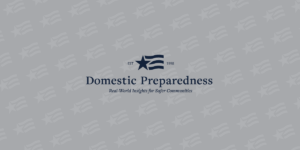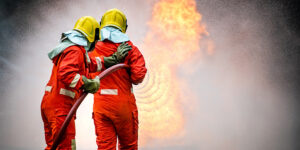

Understanding the Mobile Detection Deployment Program
The Domestic Nuclear Detection Office
September 26, 2012
Terrorist threats of radiologicaluclear attacks continue to raise concern at all levels of government. To assist state and local responders during “surge” events, the Domestic Nuclear Detection Office maintains detection units that can be deployed, along with laboratory personnel, to supplement the jurisdictions’ existing radiological and nuclear detection capabilities and resources.

Hospital Response to a 10-Kiloton Nuclear Detonation
Craig DeAtley
September 25, 2012
Article Out Loud For many years, federal, state, and local authorities throughout the United States have planned and trained for the notional possibility of a 10-kiloton improvised nuclear device being

Public Health Response & Severe Weather Emergencies
Audrey Mazurek
September 24, 2012
Public health professionals are constantly building the capacity and capabilities needed to respond to a variety of possible emergencies such as biological events, pandemic influenza, emerging diseases, manmade disasters, and a host of other dangers.

Hospitals Must Prepare Now for Future Contingencies
Theodore Tully
September 19, 2012
Considering the financial constraints already in place, and the likelihood that there will be continuing reductions in federal grant funds for preparedness, the challenge facing U.S. hospitals and other healthcare

New Security Officer Training Opportunity
Domestic Preparedness
September 19, 2012
Emergency Film Group has released Professional Security Officer: Roles & Responsibilities, a DVD-based training program for security guards. The training describes how security professionals support a safe workplace and a secure facility, while remaining professional, open and friendly.

CBRNE & NIMS: Complementary, Not Contradictory
Stephen Grainer
September 19, 2012
Some critics of the U.S. National Incident Management System (NIMS) have cited a wide variety of examples to justify their claims that the NIMS policy guidelines will not fully and/or effectively serve the nation’s needs in managing future emergency-response situations.

Securing Weapons of Mass Destruction: A Continuing Challenge
Richard Schoeberl
September 19, 2012
As events of the past week have shown, the 18-month upheaval that has devastated Syria continues to present a major risk that the Syrian government’s caches of CBRNE (chemical,

The Great ShakeOut Earthquake Drills
Domestic Preparedness
September 13, 2012
Great ShakeOut earthquake drills help people in homes, schools, and organizations practice how to be safe during big earthquakes, and provide an opportunity for everyone to improve their overall preparedness.

Protecting Responders From the Known and Unknown
John Lazier
September 12, 2012
Law enforcement officers secure the scene, hazmat teams enter the hot zone, emergency medical technicians transport victims, and emergency room doctors and nurses receive patients following a radiological incident. Each responder plays an important role, but each requires a different level of protection, which is dictated by different standards. Resources are available to help determine the best protection.

EPA’s Role in Domestic Preparedness
Erica Canzler
September 12, 2012
The terrorist attacks on the United States in September 2001 emphasized the need to better protect
the nation against future threats. New government agencies were formed while existing agencies expanded
their roles in preventing, responding to, and recovering from a variety of natural disasters and other
emergencies. The Environmental Protection Agency is one such agency that is taking steps to improve
operational readiness at the national level.

